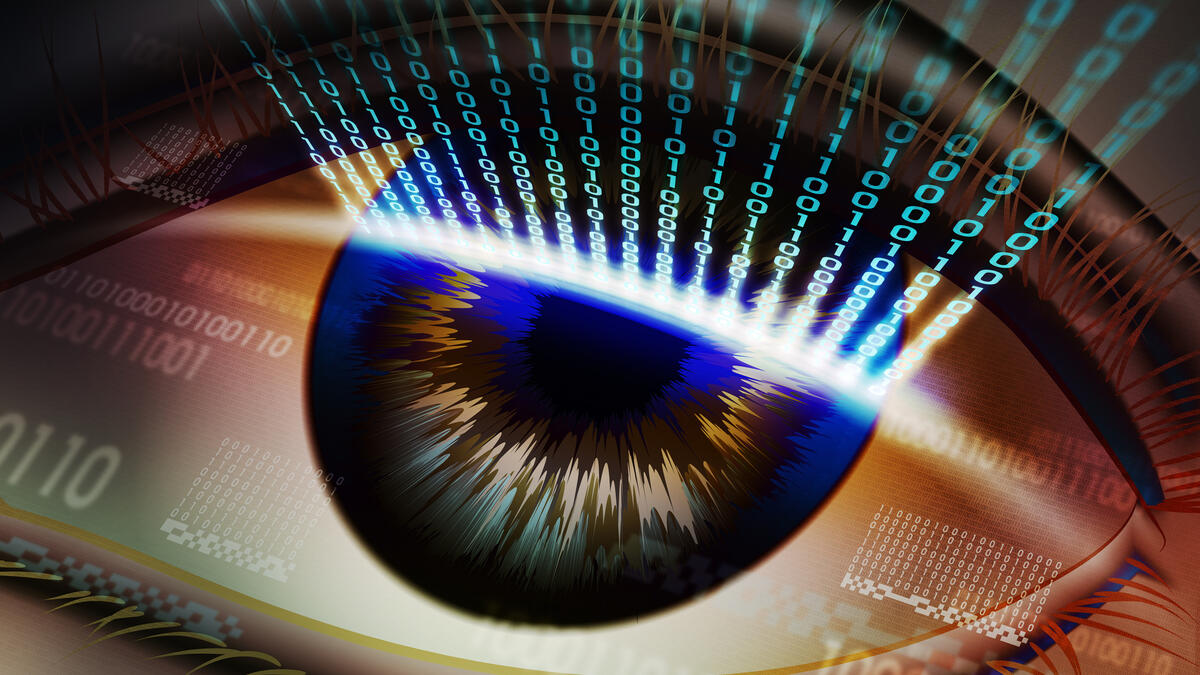It’s been said that the eyes are the window into the soul. And sometime in the very near future, they may possibly be the window into your personal identification.
The Dubai International Airport is in the process of installing a new iris recognition system that will ultimately render passports and other forms of identification obsolete. The process literally takes seconds: passengers walk through an “intelligence gate" that reads and identifies their iris codes. The hope is to achieve better accuracy and reduce long and sluggish waits through security lines.
While the science-fiction sounding advancement has made worldwide headlines, this is not news to Subbarao Kambhampati, a computer scientist at Arizona State University.
“In many ways the future is already here, but we just don’t know it,” said Kambhampati, a professor in ASU’s School of Computing, Informatics, and Decision Systems Engineering and the former president of the Association for the Advancement of Artificial Intelligence. He also studies fundamental problems in planning and decision-making, motivated in particular by the challenges of human-aware AI systems.
ASU News spoke to Kambhampati about these emerging technologies, how they are used in the United States, and how they might impact the rest of the world.
Subbarao Kambhampati
Question: Were you surprised that Dubai International Airport is about to employ facial and retinal recognition for security?
Answer: No, not at all. This technology has been around for nearly 30 years and has found increasing use, including in your smartphones. In India there were even plans to make iris recognition technology in the national identity cards as an easy way to verify/confirm the identities. But now in addition to iris recognition and retinal recognition, there’s also face recognition technology (e.g. Face ID in iPhones) that’s even less invasive.
Q: I can see how a fingerprint has its own unique characteristics in identifying someone because you can actually see the swirl patterns. How does an iris act as a fingerprint?
A: It’s the same concept. The patterns on the iris (the colored part of our eyes) are unique to every individual; features are derived from these patterns, which are then combined to produce an iris code. These codes are even more unique and accurate than a fingerprint. Iris scans are also less invasive — you don’t need to stop and affix your fingerprint; an infrared photo of the iris is sufficient. One interesting thing is that it’s harder to take your fingerprint than to take your iris signature without your knowledge. And, of course, that becomes another issue.
Q: The issue of privacy?
A: Yes, because without your knowledge, I can take your iris identification without touching or collecting anything physically from you. The technology is such that I could even gather your identification from the reflection in the rearview mirror of your car. The ease of identification is even higher with facial recognition. You could be walking on a public street and I could identify you from the picture of the crowds. Cathay Pacific Airlines uses a boarding system that just reads your face using face-ID technology instead of checking your passport. Iris- and retinal-recognition technology has been in use for a longer time but face recognition is now here.
The biggest issue people and civil society organizations have with these recognition technologies is basically the notion that you are losing privacy in public spaces. If you are walking down the street, you don’t expect a camera to be taking your picture and running it through a system and doing a check on you. This, however, is what has been happening pretty regularly in places like China. They use it on their traffic lights and use it while people are waiting at the intersections, and can even cite you if you are jaywalking.
Even here in the U.S., some police departments have already been using face-recognition software for some time. It was reportedly used to help identify many of the people who rioted at the Capitol on Jan. 6, and now more than 300 people have been arrested. Some cities won’t allow it, but others do. This lack of privacy in public spaces is definitely something people are worried about.
Q: How is the accuracy on these technologies?
A: Accuracy is higher for iris recognition compared to a fingerprint, but these are also not infallible. Researchers have also shown that these systems can be attacked. For example, there are hacks that will allow one to bypass the Samsung iris-based cell phone lock. Accuracy of face recognition technologies is more controversial. While they are good for “majority” classes, their error rates have been shown to be higher for minorities.
Q: Does it ever astound or amaze you that technology we’ve seen in science fiction movies decades ago is now a reality?
A: Yes and no. On the one hand, frictionless identification technologies have been a staple of such movies, and it is interesting to see these become part of our day-to-day lives. On the other hand, the impacts of these on privacy and surveillance do still come as an unpleasant surprise as these movies only speak to the rosy side of these technologies.
Top image courtesy of iStock/Getty Images.
More Science and technology

The Sun Devil who revolutionized kitty litter
If you have a cat, there’s a good chance you’re benefiting from the work of an Arizona State University alumna. In honor of Women's History Month, we're sharing her story.A pioneering chemist…

ASU to host 2 new 51 Pegasi b Fellows, cementing leadership in exoplanet research
Arizona State University continues its rapid rise in planetary astronomy, welcoming two new 51 Pegasi b Fellows to its exoplanet research team in fall 2025. The Heising-Simons Foundation awarded the…

ASU students win big at homeland security design challenge
By Cynthia GerberArizona State University students took home five prizes — including two first-place victories — from this year’s Designing Actionable Solutions for a Secure Homeland student design…



